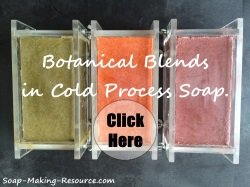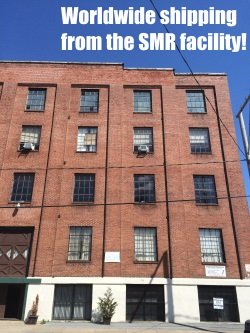Soap Making Methods
On this page, I am going to explain the four different soap making methods used today and refer you to valuable supplemental information about each technique...
So let's get started...
Melt and Pour Soap Making Method:
The melt and pour method could be the simplest method of them all or could be the most complex depending on the intricacy of your project. So what is the process? Well, it's really straightforward:
- Buy a pre-made soap base.
- Melt the soap base into a liquid.
- Add extra ingredients like soap dye, essential oils, herbs and nutrients.
- Pour the soap into your mold of choice.
- Decorate and design if desired
- Let it harden.
That's it! Simple, right? Since this could potentially be the easiest of all the soap making methods, it is an absolutely wonderful way for beginners to start out making their own soap. As your melt and pour skills grow, you may find yourself eventually creating wonderful and detailed works of art to display in your bathroom. Even if you decide to make just a basic bar soap, you can explore your creativity through the mixing of scents, and adding colors.
|
Sign Up Today!
*Your information is SAFE with us! |
Be informed that not all melt and pour soap making is easy... Some soap makers create beautiful and extremely complex works of art that take incredible skill to complete. Click here for more information about melt and pour soap making.
Cold Process Method:
The cold process method, my personal favorite, is substantially more complicated, neatly mixing science with art. Unlike melt and pour soap making, the cold process method involves creating your own soap base from scratch.
How? Through a chemical reaction called saponification.
Saponification is the grouping of a base and an acid to form a salt. In other words, you mix Sodium Hydroxide, also known as lye (which is your base) with an oil or fat, (which is your acid) to form soap (which is your salt). Sorry if I'm getting nerdy on you!
As the chemical reaction occurs, other ingredients are added. Some of these additional components change with the reaction, and some remain the same, but are embedded within the soap.
Out of the four soap making methods, this seems to be the most popular technique for home soap makers and is the method that this site mainly focuses on.
With this technique you get the extra value of knowing exactly what goes into every bar of soap and are able to completely eliminate the use of artificial ingredients if you so desire. Click here for more information about the cold process soap making method.
Hot Process Method:
The hot process soap making method is very similar to the cold process method except that heat is used to speed up the saponification process. Heat is applied at different stages using an oven, crock pot, or even a microwave, depending on your method.
This method is more historical in nature. I think you've all seen the picture of a pilgrim mixing a huge pot of soap over an open flame...
One huge disadvantage to this style of soap making is that it can sometimes be difficult to remove the soap from its mold. Also, depending on your hot process method, it can sometimes be hard to get the soap into the mold. Hot process soap making has a nice advantage in that the cure time is greatly reduced. So, no more waiting weeks on end to use your new soap! Click here for more information about the hot process soap making method.
Rebatching Method:
The rebatching soap method, also known as the milled soap method, involves shredding your own soap creation, melting it and adding additional ingredients.
As you can tell, this method is very similar to the melt and pour style of soap making except that you do not use a pre-made soap base.
This technique cannot really be practiced without knowing either the cold process method or hot process method first. It is widely used to "save" unsuccessful batches by re-melting the soap for a future project. Click here for more information about the milled soap method.
Each soap making method has its benefits, and disadvantages. As you continue learning how to make soap through this resource, you will form your own style and surely adopt one of these four soap making methods as your favorite.











